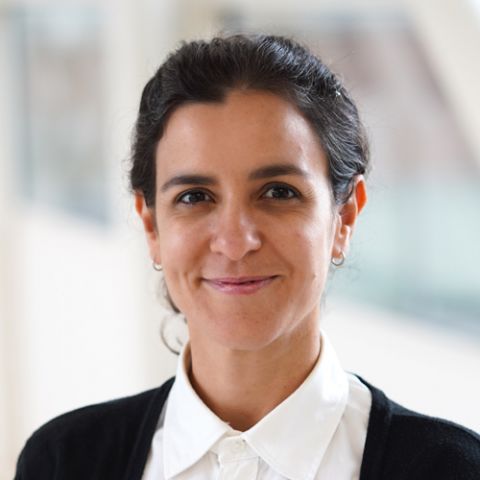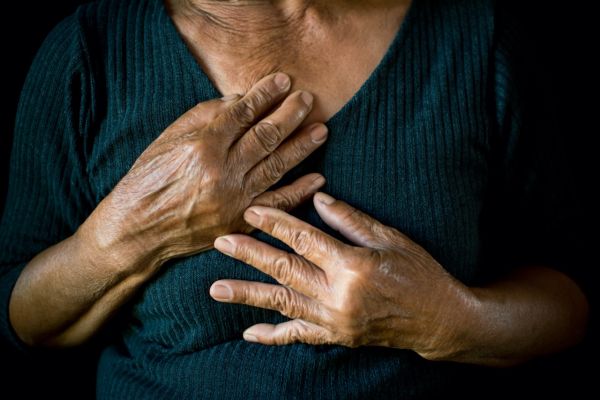Sorting out the facts about breast implants and cancer
When women ask about breast implant illness, they could be referring to one of two very different rare conditions and it can be difficult to know which one they mean — breast implant illness or breast implant-associated lymphoma, explains plastic and reconstructive surgeon Cemile Nurdan Ozturk, MD.
Breast implant illness describes a collection of vague symptoms that some women report after undergoing breast augmentation or reconstruction using breast implants. These symptoms may include a wide range of issues such as chronic fatigue, joint and muscle pain, difficulty with memory and concentration, breathing problems, poor sleep, skin rashes, dry mouth and dry eyes, anxiety, depression, headaches, hair loss and gastrointestinal problems.
“The symptoms are real,” says Dr. Ozturk, “but there is not a medical diagnosis for it. There is no testing for it or criteria to diagnose it. Even though it is not a confirmed or an established medical diagnosis, I've encountered patients who have had relief after removal of their implants. There are patients who do request their implants to be removed because they're worried that they might have breast implant illness, and we are able to do a total capsulectomy for them, which is removal of the implant together with the scar tissue around it.”
Breast implant illness, however, is often confused with the similar-sounding breast implant-associated lymphoma, an extremely rare cancer diagnosis.
What is breast implant associated lymphoma?
The official name is a long one: breast implant-associated anaplastic large cell lymphoma (BIA-ALCL). This condition is not breast implant illness, and it’s not breast cancer; it’s something very different. Breast implant-associated lymphoma is a very rare occurrence in which the body reacts to the breast implant with an oncologic process, creating a non-Hodgkin type of lymphoma in the scar tissue or fluid surrounding the implant.
Since the association between breast implants and this type of lymphoma was first identified by the Food and Drug Administration in 2011, investigators found the risk for BIA-ALCL was higher among women who had a certain type of textured implant placed. These Biocell textured implants manufactured by Allergan have been recalled and their use has been discontinued in the United States. To date, there is no evidence that the fill of the implant — saline versus silicone — is a risk factor.
For women who already have textured implants, the FDA does not recommend routine removal if you are not having any symptoms — persistent swelling, a change in the size or shape of the breast and a mass or pain in the implant area. Women who do have these symptoms should see their healthcare provider for evaluation for BIA-ALCL which involves a physical exam, imaging with ultrasound or magnetic resonance imaging (MRI) and evaluation of the fluid or tissue around the implant.
“We are able to offer surgery to women who want their implants replaced or removed completely,” says Dr. Ozturk. It’s important to know that breast cancer patients who undergo breast implant reconstruction are not at greater risk for implant-associated lymphoma than women without breast cancer. “There are many, many women in the United States undergoing cosmetic breast implant placement and their risk is the same.”
Breast implants also do not increase risk for breast cancer. Women who have breast implants should follow the same breast screening guidelines as women without them. Women who have been treated for breast cancer and now have breast implants should follow the screening recommendations from their oncologist and undergo routine evaluation of their implants with a clinical exam and imaging as necessary by their oncologist or plastic surgeon, or through Roswell Park’s Survivorship program.
Other options for breast reconstruction
Implants are not the only option for breast reconstruction or improved breast appearance after breast cancer surgery. Roswell Park plastic and reconstructive surgeons offer advanced techniques that transfer tissue, skin and fat from other areas of the body to create the breast mound.
“We offer procedures to improve deformities in the breast that may have resulted from a wide local excision (lumpectomy) or radiation. For example, fat grafting can improve the breast shape and size. Surgery to the other breast, such as a breast reduction, breast augmentation or breast lift, may be an option to achieve symmetry.”
Patients may also choose to merely improve the appearance of their chest wall after undergoing mastectomy. “I can remove any extra skin folds to give the chest wall a smoother shape and fill in local deformities or deficiencies with fat injections,” says Dr. Ozturk.
Breast reconstruction surgery
Roswell Park’s in-house plastic and reconstructive surgery team offers the latest options for breast reconstruction and improved breast appearance, including procedures unavailable from other providers.
Learn More
